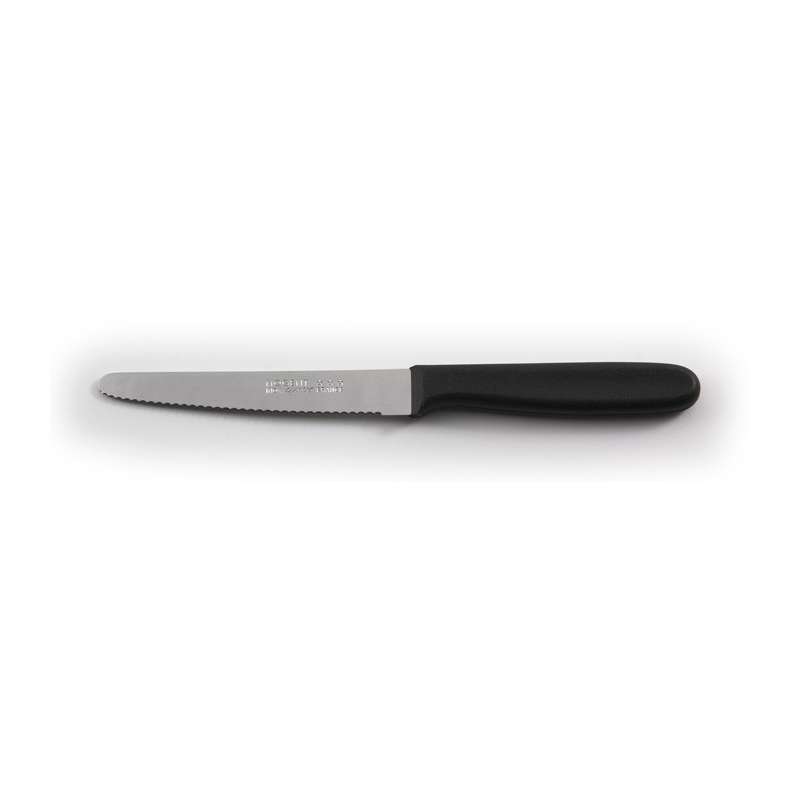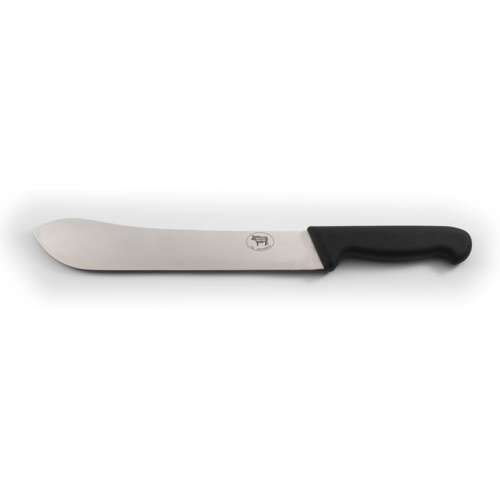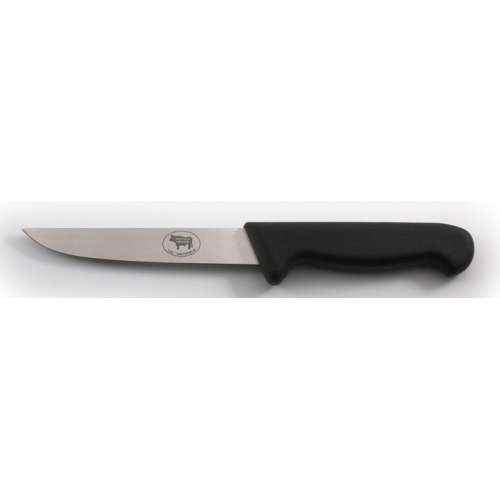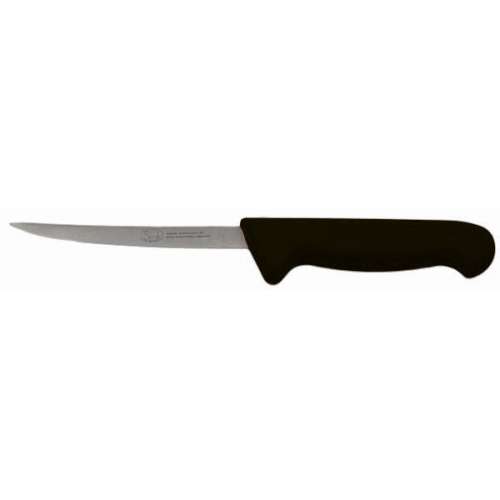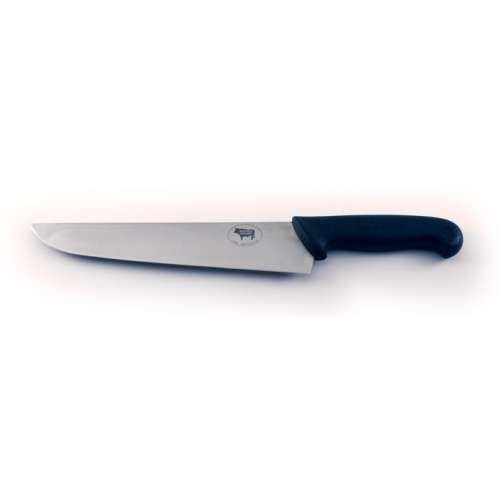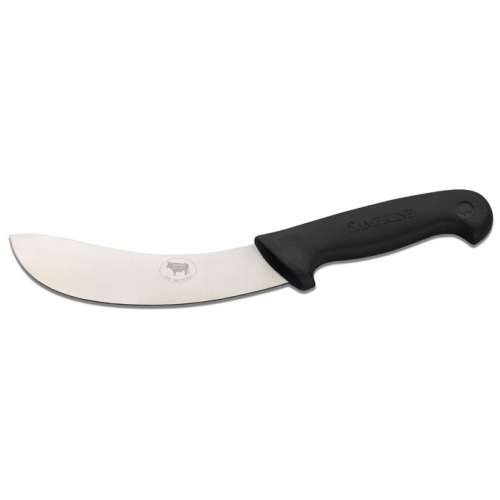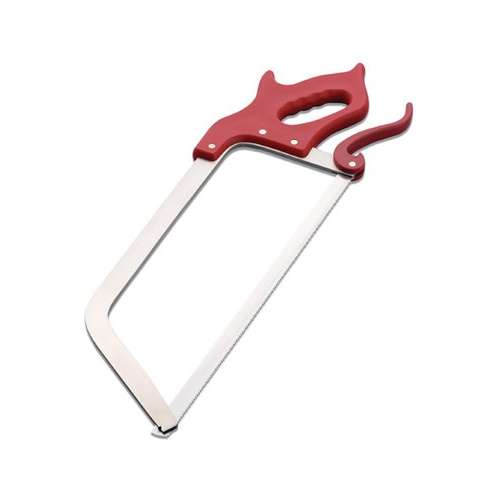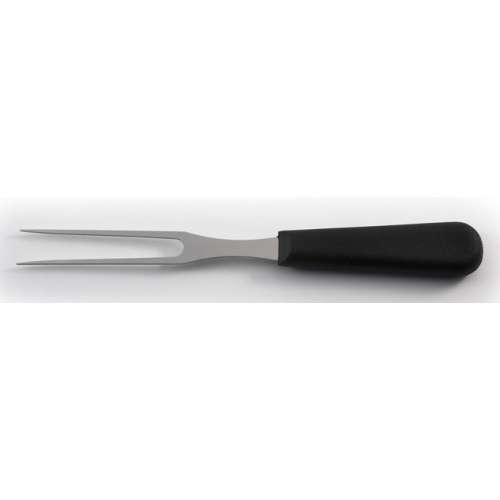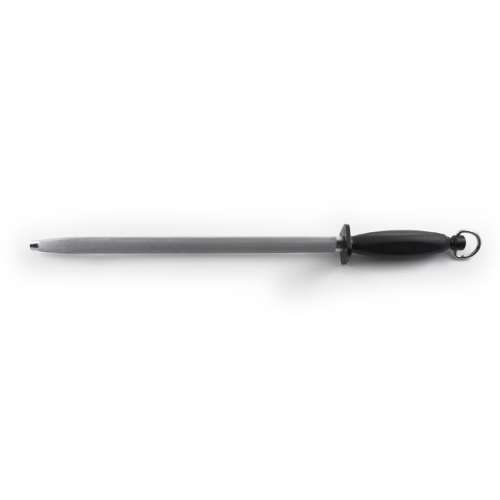No products
Product successfully added to your shopping cart
There are 0 items in your cart. There is 1 item in your cart.
The tomato knife is a versatile kitchen essential. One of our bestselling knives, it features a rounded tip and serrated edge, suitable for a wide range of different uses. As a result, the tomato knife is a very popular choice for chefs and home cooks alike. Knives in our Samprene range are available in various handle colours, making it easy to assign for a specific use.
As the name suggests, this knife was traditionally designed for slicing tomatoes. The edge allows the knife to penetrate the tomatoes’ skin quickly, without crushing the flesh. Over the years, the tomato knife has developed multiple uses and it’s fair to say that it’s a staple in most kitchens. It can be used for a variety of foods, such as fruits/vegetables, baked goods and cooked proteins.
Our tomato knife blades are manufactured using high quality 420 stainless steel that has added Molybdenum. This gives the steel excellent edge retention, high durability and exceptional rust resistance.
Each knife in the Samprene range features a moulded handle, which combines the strength and durability of Polypropylene with the softness and serenity of rubber. A combination of sublime strength and lasting comfort.
Tomato Knife FAQs
What Is The Purpose of a Tomato Knife?
The tomato knife was created to be able to pierce the flesh of the fruit (yes, fruit) without spilling and crushing the flesh and seeds inside. Its serrated edge means it can easily slice through without having to pierce a hole in the tomato first. You can also hold the fruit gently and allow the knife to do the work.
What is The Difference Between a Tomato Knife and a Regular Kitchen Knife?
A regular utility kitchen knife is used for chopping, peeling and slicing meats. Alternatively, a tomato knife is good for cutting softer fruits, vegetables and cheeses with minimum pressure.
Can You Sharpen a Tomato Knife?
Yes, you can sharpen a tomato knife however, you will require the right equipment such as a sharpening steel or Sportsman’s steel.
Here is our step-by-step guide of how to sharpen your tomato knife:
To begin, locate the beveled side of the knife, which is typically found on serrated knives. This is the side you’ll need to be working on.
Using a sharpening steel, set it at a 20-degree angle from the blade and run it between each serration “peak” or along the “valleys”.
Repeat this process along every valley until they are all sharpened.
Finally, remove any burrs that have formed on the non-beveled side using a whetstone or a similar tool.
| Edge Type | Serrated Edge |
| Blade Lengths Available | 4" |
| Handle Material | Polypropylene |
| Dishwasher Safe | Yes |
Reviews
No customer reviews for the moment.
Customers who bought this product also bought:
30 other products in the same category:


